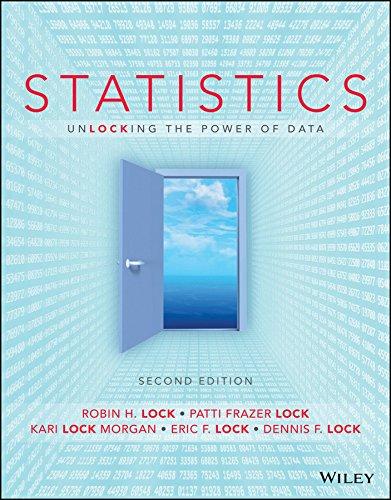Exercise 8.39 explores the topic of drug dosing and drug resistance by randomizing mice to four different
Question:
Exercise 8.39 explores the topic of drug dosing and drug resistance by randomizing mice to four different drug treatment levels: untreated (no drug), light ( \(4 \mathrm{mg} / \mathrm{kg}\) for 1 day), moderate \((8 \mathrm{mg} / \mathrm{kg}\) for 1 day), or aggressive ( \(8 \mathrm{mg} / \mathrm{kg}\) for 5 or 7 days). Exercise 8.39 found that, contrary to conventional wisdom, higher doses can actually promote drug resistance, rather than prevent it. Here, we further tease apart two different aspects of drug dosing: duration (how many days the drug is given for) and amount per day. Recall that four different response variables were measured; two measuring drug resistance (density of resistant parasites and number of days infectious with resistant parasites) and two measuring health (body mass and red blood cell density). In Exercise 8.39 we don't find any significant differences in the health responses (Weight and \(R B C\) ) so we concentrate on the drug resistance measures (ResistanceDensity and DaysInfectious) in this exercise. The data are available in DrugResistance and we are not including the untreated group.
(a) Investigate duration by comparing the moderate treatment with the aggressive treatment (both of which gave the same amount of drug per day, but for differing number of days). Which of the two resistance response variables (ResistanceDensity and DaysInfectious) have means significantly different between these two treatment groups? For significant differences, indicate which group has the higher mean.
(b) Investigate amount per day by comparing the light treatment with the moderate treatment (both of which lasted only 1 day, but at differing amounts). Which of the two resistance response variables have means significantly different between these two treatment groups? For significant differences, indicate which group has the higher mean.
(c) Does duration or amount seem to be more influential (at least within the context of this study)? Why?
Data From Exericse 8.39:
Drug resistant pathogens pose one of the major public health challenges of this century. Conventional wisdom is that aggressive treatment should be used to kill pathogens rapidly, before they have a chance to acquire resistance. However, if drug pathogens are already present, this strategy may actually backfire by intensifying the natural selection placed on drug-resistant pathogens. A study took mice and infected them with a mixture of drug-resistant and drug-susceptible malaria parasites, then randomized mice to one of four different treatments of an antimalarial drug (with 18 mice in each group): untreated (no drug), light (4 mg/kg for 1 day), moderate \((8 \mathrm{mg} / \mathrm{kg}\) for 1 day), or aggressive ( 8 \(\mathrm{mg} / \mathrm{kg}\) for 5 or 7 days). Data are available in DrugResistance.
Step by Step Answer:

Statistics, Enhanced Unlocking The Power Of Data
ISBN: 9781119308843
2nd Edition
Authors: Robin H Lock, Patti Frazer Lock, Kari Lock Morgan, Eric F Lock, Dennis F Lock





